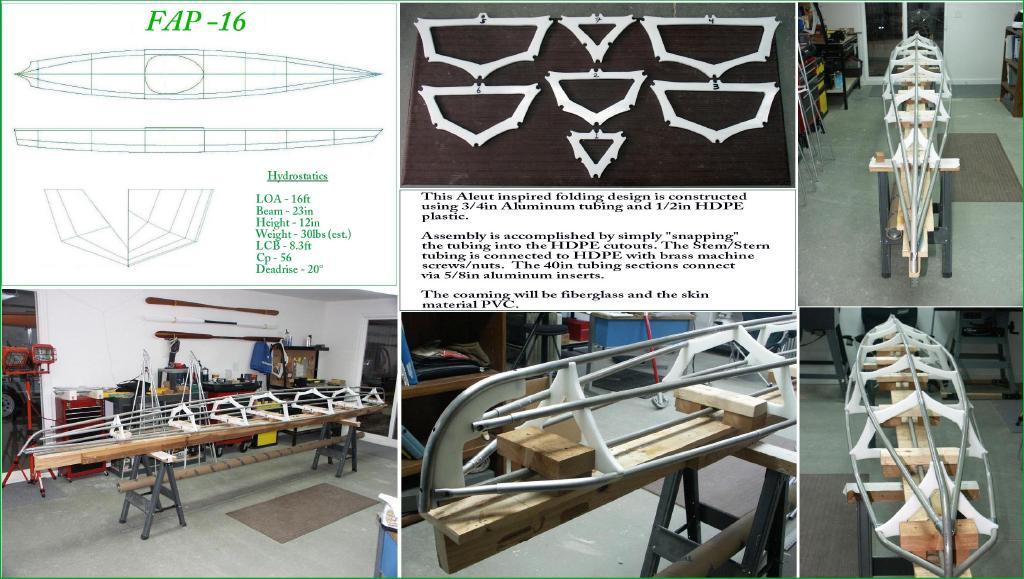
The name FAP-16 stands for (Folding Aluminum Polyethylene - 16)
This is moving along much faster than I anticipated.
The additional time spent drilling and cutting
the HDPE cross-sections is offset by the fact that
the sections don't get varnished, and there is no need to lash and epoxy
the connection points.
I decided to make the tubing connections at about 40 inches.
The 5/8in tubes fit too loosely to be effective inserts when
used with 3/4in X .035wall. Life is a compromise.
I wrap inserts with packaging tape, the very thin variant, until I get a tight fit. At the connectors, wrap only the stationary part of the piece. Won't help much for the connections, but this way you can slide a snug fitting insert anywhere there's additional strength needed. I've finished riveting the inserts and have almost completed the stern. All that is left to do now includes the bow HTPE connection, deck tubing, and fiberglass coaming.
Time spent so far includes:
Design/Print cross sections - 6 hrs
Drilling/Cutting HDPE - 12 hrs
Tubing (fitting, cutting, inserts, stern) - 12 hrs
I've rounded the Aleut stern more than usual to simplify the building process. That Aleut stern sure complicates the PVC skinning process.
A few weeks later, Tom writes:
Now that the hypalon has cured, I've been able to assemble the kayak.
It goes together very easy.
The skin weighs only 5 lbs. Actually it's less but I was afraid you
wouldn't believe me.
That is very light indeed. My PVC skin usually comes in at about 12 lbs. And complicated it is. To get a good idea about what to tackle with when it is about covering a full aleut baidarka stern with PVC skin, look over here and decide for yourself.
Contributors to this page: Thomas Yost (TDY), Patrick Poirier (PPR), Gerald Maroske (GUM) and Hendrik Maroske (HHM)




